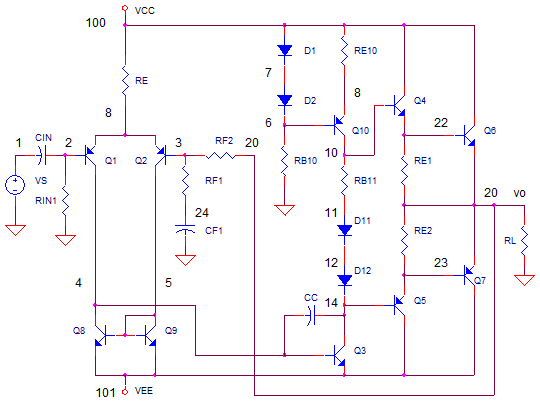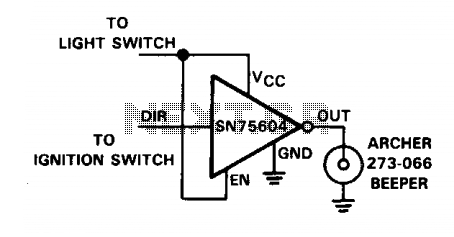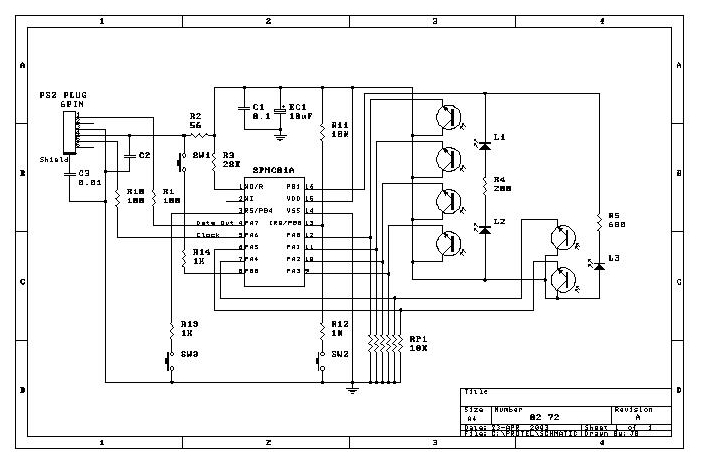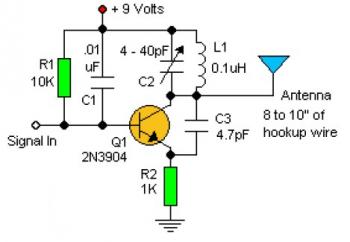
SH-868 ASIC holiday lights
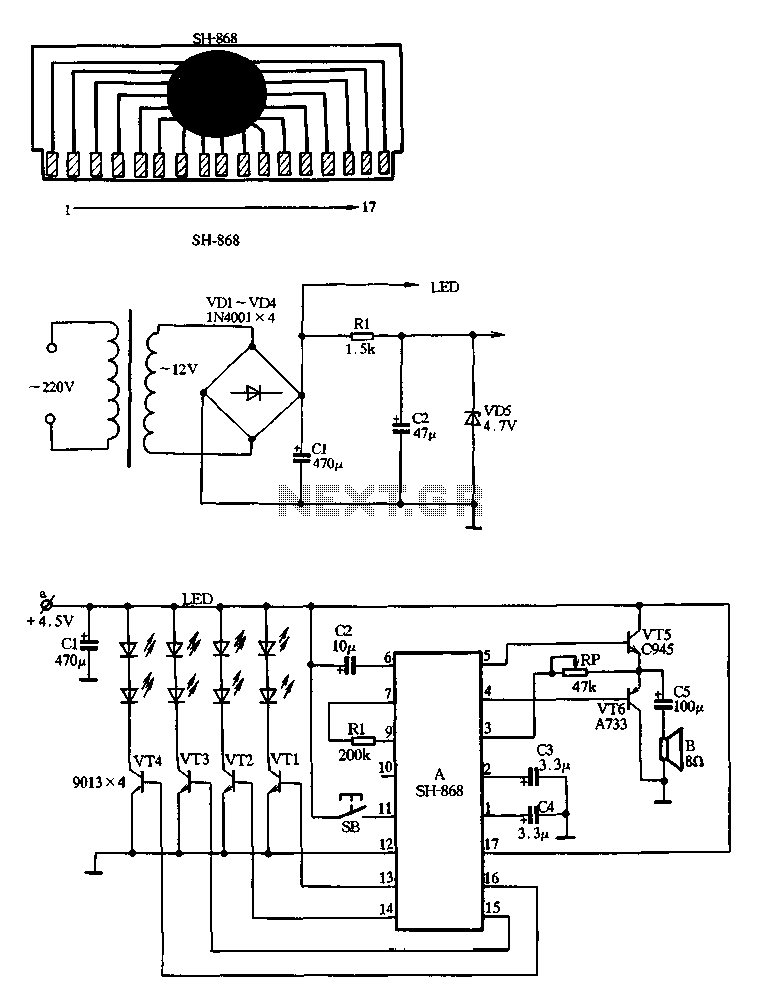
Figure 2-80 illustrates the SH-868, an integrated circuit designed for a music flash circuit powered by three batteries. It can drive a flashing light-emitting diode (LED) while simultaneously activating a sound speaker. The device features a function selection button (SB) that allows users to cycle through seven available functions with each press. The functions include: 1) four music tracks with lights that flash in sync; 2) music with lights that emit a scent; 3) music with a single lamp flashing; 4) audio with music and a lamp flashing; 5) automatic music with four lights flashing; 6) automatic flashing of four lights without music; and 7) all four lights on without music. If pin 10 of the chip is connected to the positive supply and pin 11 is left unconnected, function 14 will continuously repeat the action.
The SH-868 integrated circuit is a versatile component suitable for applications requiring synchronized audio and visual effects. It operates efficiently on a three-battery power supply, making it ideal for portable devices. The circuit is designed to drive light-emitting diodes, which can provide visual feedback in the form of flashing lights that correspond to the audio output.
The function selection button (SB) is a critical feature, allowing users to switch between various modes of operation. Each mode is tailored to enhance the user experience by combining audio with specific lighting effects. The first mode offers a dynamic interaction between four different music tracks and lights that pulse in rhythm with the sound, creating an engaging atmosphere. The second mode introduces an additional sensory element by incorporating scent emission alongside the music and lighting.
The remaining functions provide a range of options, from simpler configurations with a single lamp to more complex setups that involve automatic sequences of music and lighting. This flexibility allows the SH-868 circuit to be employed in diverse applications, including toys, decorative lighting, and interactive displays.
In terms of electrical connections, pin 10 serves as the positive supply input, while pin 11 can be left unconnected to enable a specific repeating function. This design consideration allows for easy integration into various electronic systems while providing adaptability in function selection. Overall, the SH-868 circuit is a well-engineered solution for creating engaging audio-visual experiences in compact, battery-operated formats.Figure 2-80 with the SH-868 is an integrated circuit made music flash circuit, which uses three battery power supply. Can drive flashing light emitting tube, while electronic m usic sound speaker also issued chip storage of. SB for the function selection buttons, each press once to select a function, a total of seven kinds of functions are available: 1, four music + lights beat with the music at the same time; 2 + Lamps music with the music while the smell: 3, music + single lamp vault beat with the music; 4, audio and music + lamps vault beat with the music; 5, automatic music + four lights beat with the music; 6, automatic beat four lights no music; 7, four lights all light without music. If the 10-foot chip connected to the positive supply, II feet vacant, the function 14 will repeat the action.
The SH-868 integrated circuit is a versatile component suitable for applications requiring synchronized audio and visual effects. It operates efficiently on a three-battery power supply, making it ideal for portable devices. The circuit is designed to drive light-emitting diodes, which can provide visual feedback in the form of flashing lights that correspond to the audio output.
The function selection button (SB) is a critical feature, allowing users to switch between various modes of operation. Each mode is tailored to enhance the user experience by combining audio with specific lighting effects. The first mode offers a dynamic interaction between four different music tracks and lights that pulse in rhythm with the sound, creating an engaging atmosphere. The second mode introduces an additional sensory element by incorporating scent emission alongside the music and lighting.
The remaining functions provide a range of options, from simpler configurations with a single lamp to more complex setups that involve automatic sequences of music and lighting. This flexibility allows the SH-868 circuit to be employed in diverse applications, including toys, decorative lighting, and interactive displays.
In terms of electrical connections, pin 10 serves as the positive supply input, while pin 11 can be left unconnected to enable a specific repeating function. This design consideration allows for easy integration into various electronic systems while providing adaptability in function selection. Overall, the SH-868 circuit is a well-engineered solution for creating engaging audio-visual experiences in compact, battery-operated formats.Figure 2-80 with the SH-868 is an integrated circuit made music flash circuit, which uses three battery power supply. Can drive flashing light emitting tube, while electronic m usic sound speaker also issued chip storage of. SB for the function selection buttons, each press once to select a function, a total of seven kinds of functions are available: 1, four music + lights beat with the music at the same time; 2 + Lamps music with the music while the smell: 3, music + single lamp vault beat with the music; 4, audio and music + lamps vault beat with the music; 5, automatic music + four lights beat with the music; 6, automatic beat four lights no music; 7, four lights all light without music. If the 10-foot chip connected to the positive supply, II feet vacant, the function 14 will repeat the action.
